Annapurna Circuit Trekking Details
The Annapurna Circuit Trek is a well-liked trekking route located in the Annapurna region of Nepal. It's famous for its surprising natural beauty, diverse landscapes, and rich cultural experiences. The trek typically takes around 10 to 15 days to complete, depending on the chosen itinerary, pace, and side trips. You will have wonderful trekking experience for Annapurna Circuit Trek with a hiring guide.
Annapurna Circuit Trekking Route
The classic Annapurna circuit trek starts in Besisahar and ends in Jomsom, Beni or Nayapul (depending on the chosen route). Nowadays, most of the trekkers start the trek from Dharapani and ends in Muktinath due to road constructed. Our hiring guide will lead you to avoid the road path. The trail circles the Annapurna Massif and others mountain, offering breathtaking views of peaks like Annapurna I, II, III, and IV, Dhaulagiri, Gangapurna, Nilgiri center, north, and south, Machapuchare (Fishtail), and more. The trek passes through various climatic zones and landscapes, including lush subtropical forests, alpine meadows, high mountain deserts, and attractive traditional villages.
Annapurna Circuit Trek Altitude:
The highest point of the Annapurna Circuit trek is the Thorong La Pass, situated at an elevation of about 5,416 meters (17,769 feet). Suitable acclimatization is necessary to prevent altitude sickness. Most itineraries include rest days at Manang to allow trekkers to adapt to the increasing altitude. If you will get symptoms of the altitude sickness, you need to converse with your guide for further plan.
Lodging and Food during the Trip:
There are teahouses (lodges) along the trekking route where you can find accommodation and meals. These teahouses offer basic but comfortable lodging and a variety of local and international food options. It's advisable to have some cash with you, as ATMs are limited along the trail due to its remote. Our guide manages the best lodges for accommodation and serves the meal to you in your places.
Requeir Physical Fitness for the Trip:
The Annapurna Circuit is considered a moderate to demanding trek. Trekkers should have a reasonable level of good health with physical fitness, and be prepared for long days of walking and steep ascents and descents. Previous trekking experience can be helpful, but it's not a strict requirement. Gradual acclimatization and a slow pace is the main key to a successful and enjoyable trek. Those things manage by the hiring guide and makes stress-free journey.
Cultural Highlights during trip:
The trek also offers opportunities to experience the local culture and interact with the native communities, including the Gurung, Thakali, and Manangba people. You'll have the chance to visit temple, monasteries, ancient villages, and learn about the traditional way of life in the Himalayas. You have to ask your guide for the culture information and rule of respect the local culture.
Acclimatize day in Manang
Taking an acclimatization day in Manang during the Annapurna Circuit Trek is a common practice to help trekkers adjust to the higher altitudes and reduce the risk of altitude sickness. Manang is a picturesque village situated at an elevation of around 3,540 meters (11,614 feet) above sea level. Spending an extra day here allows your body to gradually adapt to the increasing altitude before ascending to even higher elevations. After get Manang Village, guide will brief about acclimatize day.
Rest and Hydration:
Use this day to rest, relax, and hydrate. Staying properly hydrated is essential for acclimatization. Drink plenty of fluids, such as water, herbal teas, and soups, to stay hydrated in the dry mountain air.
Short Hike:
While you're in Manang, you can take a short hike to a higher elevation and then return to the village for the night. This helps your body adjust to higher altitudes without the stress of extended experience. A popular hike is to Gangapurna Lake and Glacier, which is a few hours' walk from the village.
Explore around Manang:
Spend some hours exploring the Manang village and its surroundings. Manang has monasteries, traditional buildings, and stunning views of the surrounding peaks. This is also a great opportunity to immerse yourself in the local culture and interact with fellow trekkers.
Altitude Education: you can use this day to educate yourself and with guide about the symptoms of altitude sickness and how to recognize them. It's important to be aware of your own body and any signs of discomfort or illness.
Proper Nutrition:
Consume nutritious meals rich in carbohydrates and protein. Proper nutrition contributes to your body's ability to adapt to higher altitudes.
Enjoy the Views:
Enjoy the beautiful mountain views and scenery from Manang. Take in the breathtaking landscapes, and possibly even do some light stretching or yoga to keep your muscles active.
Side Trip to Tilicho Lake
Adding a side trip to Tilicho Lake during the Annapurna Circuit Trek is a fantastic idea if you're looking to experience even more of the region's natural beauty and diversity. Tilicho Lake is one of the highest lakes in the world and offers stunning views of the surrounding mountains.
Adding the Tilicho Lake is alternative route to your Annapurna Circuit Trek will definitely enhance your experience by providing you with the opportunity to see one of the region's most iconic and beautiful natural landscapes. Just ensure that you're well-prepared, informed, and have accounted for the extra time and challenges related with this side trip.
It is strongly advised that you need a guide when embarking on the Tilicho Base Camp side trip from Manang. The trail lacks comprehensive information and can be difficult, characterized by narrow passages and areas prone to landslides. Without the experienced trekking guide you will have encounter and face potentially challenges during the Tilicho Base Camp Trek.
Thorong La Pass
The Thorong La Pass is one of the main highlights of the Annapurna Circuit Trek. It's the highest point of the trek and offers trekkers stunning panoramic views of the surrounding mountains.
The Thorong La Pass is situated at an altitude of 5,416 meters (17,769 feet) above sea level. This makes it one of the highest trekking passes in the life.
Crossing the Thorong La Pass is a significant achievement for trekkers on the Annapurna Circuit. It marks a challenging and exhilarating point of the trek.
Most of the people plan for an early start on the day of crossing the pass. Trekkers usually wake up very early in the morning to set out, as the weather is generally calmer and visibility is better during the early hours. Without the guide, it is difficult to find the right location in bad weather. We highly recommend you must hire a guide for Annapurna Circuit Trek to crossing the Throng-La Pass.
The ascent to the pass will be physically challenging due to the high altitude and steep terrain. Trekkers may experience symptoms of altitude sickness, and the thin air can make breathing more difficult.
Despite the challenges, the views from the pass are incredibly rewarding. Trekkers are treated to a panorama of snow-capped peaks, including Annapurna, Dhaulagiri, and more. The descent on the other side offers a change in landscape as you move into the Mustang region.
Visit Muktinath Temple
Muktinath Temple is a sacred pilgrimage site for both Hindus and Buddhists, located in the Mustang region of Nepal. It holds great religious meaning and is a common destination for trekkers, including those on the Annapurna Circuit Trek.
Muktinath Temple is situated at an altitude of about 3,800 meters (12,467 feet) above sea level, making it best pilgrimage sites for culture experience along the Annapurna Circuit.
Muktinath is considered a place of salvation and spiritual freedom for both Hindus and Buddhists. Hindus believe that bathing in the 108 water spouts and visiting the temple will cleanse them of their sins. Buddhists associate Muktinath with the fire element and believe it to be one of the 24 tantric places.
Visiting Muktinath Temple with a guide is not only an opportunity for spiritual exploration but also a chance to witness the rich cultural and natural beauty of the Mustang region. It's advisable to travel with a knowledgeable guide who can provide insights into the local culture and customs.
Best Time to Annapurna Circuit Trek
The best time to visit the Annapurna circuit trek is during the two main trekking seasons namely spring and autumn season. These two seasons offer the most favorable weather and spectacular views, making your trekking experience enjoyable and memorable. We can do an Annapurna Circuit Trek throughout the year but the weather is quickly changeable during the summer and winter season, which makes it terrible and difficulties to get to the target on time due to landslides and snow falls.
Spring season (March to May):-
Spring is one of the best times for the Annapurna Circuit Trek. During this season, the weather is generally stable, with mild temperatures during the day and clear skies, providing excellent visibility of the surrounding mountains including Annapurna II (7890 m), Annapurna I (8091 m), Annapurna III (7545 m), Gangapurna (7450 m), Glacier Dom (7425 m), Machhapuchhre (6890 m) and more. Trekking trail is decorated with vibrant rhododendron blooms, creating a colorful and picturesque landscape. The temperatures are pleasant, making it a comfortable time for hiking and the days are longer, allowing for more exploration. So spring is the best and recommended time for trekking and climbing in Nepal.
Autumn season (September to November):-
Autumn is another popular and recommended season for the Annapurna circuit Trek. The weather will be dry, and the skies are generally clear, offering breathtaking views of the Himalayan peaks. The temperatures are moderate, and the conditions are favorable for hiking. Autumn is also known as the post-monsoon season, so the air is crisp and clean after the rains, providing stunning vistas of the surrounding mountains and landscapes. You might have the opportunity to witness local festivals like Dashain and Tihar, which add a cultural touch to your trekking experience. While autumn is popular and can attract a higher number of trekkers, the atmosphere is generally lively and energetic.
Summer and winter season (July to August and November to February):-
Annapurna Circuit Trek is possible during the summer and winter seasons but can be more challenging compared to the preferred trekking seasons of spring and autumn. Summer is not the most recommended time due to the challenging weather conditions and potential risks involved. Winter season can be suitable for experienced trekkers but you have to prepare for the cold conditions and have the appropriate gear and equipment.
However, the weather and trail conditions may not be as favorable and you may encounter more challenges, such as rain and snow during the winter months (December to February) and the possibility of monsoon rains and leeches during the summer months (June to August). This is not good time for trekking in Annapurna Region of Nepal.
Acclimatization day to reduce the Altitude Sickness for the Trek
An acclimatization day is necessary during the 10- to 15-day Annapurna Circuit Trek because the route passes through high-altitude terrain, including the crossing of Thorong La Pass at 5,416 meters. The trek starts at 1,900 meters in Dharapani and gradually climbs to Thorong La Pass, passing through Manang Valley and several villages and high-altitude areas.
As you ascend, oxygen levels and air pressure decrease compared to sea level. Once you reach an altitude above 3,000 meters, you may experience symptoms of altitude sickness, such as nausea, vomiting, diarrhea, headaches, loss of appetite, tiredness, dizziness, and sleeplessness.
Therefore, an acclimatization rest day at Manang village is included in the itinerary. This rest day helps prevent altitude sickness and allows your body to adapt to the environment. If you experience any symptoms of altitude sickness during the Annapurna Circuit Trek, it is crucial to address them immediately to avoid complications.
To minimize risks, follow your guide’s instructions closely, as they are knowledgeable about high-altitude sickness. Be honest with your guide about how you are feeling, especially when ascending above 3,000 meters. Your guide may advise you to walk slowly, and in some cases, suggest sleeping at a lower altitude before ascending further — a method known as acclimatization.
Additionally, you should stay well-hydrated by drinking plenty of water, eat a balanced diet rich in carbohydrates, maintain a comfortable pace, and avoid alcohol and sedatives. By adhering to these guidelines, you can reduce the risk of altitude sickness and enjoy a safer, more enjoyable Annapurna Circuit Trek.
However, if you continue to feel unwell despite taking precautions, it is essential to descend to a lower altitude immediately.
About Diamox — a medicine for high altitude sickness
Diamox is the brand name for Acetazolamide, a medicine that helps prevent and treat altitude sickness (Acute Mountain Sickness, AMS). When trekkers ascend to higher elevations, oxygen levels decrease. Taking Diamox helps your body adjust faster to high altitudes by stimulating deeper and faster breathing, allowing you to take in more oxygen. Diamox works by making your blood more acidic, which signals your body to breathe faster at high elevations. This helps reduce symptoms such as headaches, nausea, and dizziness.
Based on our experience and advice from our altitude doctor, if trekkers have previous high-altitude trekking experience (around 4,000 to 5,000 meters) in Nepal, there is usually no need to take Diamox. However, if trekkers are trekking at these altitudes for the first time, it is recommended to start taking half a tablet of Diamox from the first day of the hike.
For example, all trekking route in Nepal, where the maximum elevation is 4,500 to 5500 meters, it is advisable to start taking Diamox from the first day of the trek. After taking Diamox, some people may experience side effects such as tingling sensations in the skin. Therefore, it is important to drink at least 4 liters of water per day while trekking and taking Diamox.
Important Notes
- Diamox is not a cure — it just helps prevent or lessen AMS.
- Stay hydrated — Diamox acts as a diuretic (you'll pee more!).
- Common side effects: Tingling in fingers, frequent urination, and slight taste changes.
- Always ascend slowly, even with Diamox.
- Never use Diamox as an excuse to climb too fast!
Preparation for Annapurna Circuit Trek
Trekking to Annapurna Circuit is a breathtaking adventure, but it requires careful preparation to ensure a safe and enjoyable experience. Annapurna Circuit Trekking itinerary is a bit longer and tougher itinerary. So your physical fitness, mental health and determination are the important factors to consider before participating in Annapurna Circuit Trek.
If you don't have the previous trekking experience, we highly recommend having good physical fitness and need a proper preparation to easily complete the Annapurna Circuit trek such as normal walking, day hiking, running, biking, jogging and swimming. These practices are beneficial in preparing for the trekking to Annapurna Circuit.
The altitude gain of 5416 meters from the 1800 meters, the journey through farmland, terraces, landscapes, narrow trail, forest, rocky path and Gurung, Thakali and Manangies communities, there are a number of ascents and descents. Thus, a good level of physical fitness is essential to maintain 5 to 8 hours of daily trekking. Mental flexibility is equally crucial, as self-doubt can often give rise to discomfort and anxiety. It is highly recommended to seek medical advice prior to embarking, particularly if respiratory concerns are relatable. You can ask to local trekking agency for preparation before book the Annapurna Circuit Trek.
How much do you tip guide and porter in Nepal?
The guide and porter play an important role in the success of the trip, ensuring that it is completed smoothly and without any issues. After completing the trip, tipping the guide and porters is highly recommended to motivate the team and reward them for their outstanding service, which contributes to a memorable and inspiring experience.
Tipping is an important tradition, as it acknowledges and appreciates the hard work of the local staff who assist you throughout your journey. It is customary to tip at the end of the trek, and you should gather all team members (guide, porter, and assistant guide) together to distribute the tip. Tips are generally given in cash, preferably in US dollars or Nepalese rupees, using small denominations to facilitate easier distribution.
The typical guideline is to tip around 10% to 15% of the total trip cost if you purchased a full package, but you can increase the amount based on their hard work and the quality of service provided. If you only hired a guide and porter for a budget trek, they generally expect about 10 to 15 USD per day per person.
Trekking Gear List
Travel equipment are necessary to pack before you travel. We hope it is too much to carry from your home to others country but some are the necessary equipment can be hired or buy in Kathmandu around Thamel. These general equipment are for all seasons while on trekking in Nepal, but may be different as per the different season and duration of trekking routes on your chosen trip.
Documents:
- Passport and 4 passport size photos
- Travel insurance details (in case an emergency evacuation if needed)
- Boarding passes for flights
- Driver’s license (if needed)
- Cash USD
- Credit/Debit Card (Ensure you have $500 on your card incase an emergency helicopter evacuation is needed)
Sleeping:
- Sleeping bag (Comfort rating -15 Celsius recommended)
- Sleeping bag liner (Optional)
Footwear:
- Trekking boots: one pair lightweight
- Sandals for city and tea house footwear
- Shoes for the plane and tea houses (Optional)
- Gaiters for hiking in winter to the base camp
- Thin, lightweight inner socks
- Thick, warm wool hiking socks
Clothing for Body:
Please make sure that you have non-cotton clothing for trekking:
-
Base-layer t-shirts (e.g. running t-shirts)
-
Fleece/Windproof jacket
-
Waterproof jacket
-
Down jacket for warmth
-
Travel clothes and City Wear
-
Underwear
-
Base-layer trousers (optional)
-
Waterproof trousers
-
Trekking trousers
-
Trekking shorts (Optional)
-
Gloves and wool hat
-
Bandanna or scarf
Health Requirements (Basic First Aid Kit)
- First-aid kit; should contain lip salve, Aspirin, Band Aids, anti-histamine, Imodium or similar tablets for mild cases of diarrhea
- Re-hydration powder, extra prescription drugs you may be taking if any particular
- Wet wipes for cleaning can be purchased in Kathmandu
Others:
- Sunglasses and Sun cream
- Towel
- Book (reading and writing materials)
- MP-3 /Music, headphones and ear plug (who know some people on group are snoring) as
- Travel wash
- Hand sanitizer, wet wipes
- A day bag: 35 liters
- A duffel or rucksack with straps to go over your back (Max 12 kg of weight for porters to carry)
- Dry Liner or Dry Bag
- Water bottle/thermos/ camel bag: At least 2 L. Nalgen bottles best.
General Toiletries
-
Toilet papers/ tissue
-
Contact lenses, Glasses (if needed)
-
1 medium sized quick drying towel
-
Tooth brush/paste (preferably biodegradable)
-
Multipurpose soaps (preferably biodegradable)
-
Large plastic bags – for keeping items dry inside your kit / duffel bag
-
Travel game i.e. chess, backgammon, and scrabble. (for luxuries)
-
Binoculars (for luxuries)
-
Trail Map/Guide book (if you are alone)
High altitude sickness information
Mountain sickness is another name for high altitude sickness. You must be aware of high altitude sickness symptoms since they arise rapidly if you hike or ascend to a higher elevation. Here are some details if you're curious as to why it occurs. The air pressure is the main cause of altitude sickness. Your body needs time to adapt to the shift in air pressure when you travel to higher elevations since the air pressure decreases and there is less oxygen present. According to doctors, if you are at sea level, it begins at 8,000 feet (2400 meters).
Types
There are three types of altitude sickness:
Acute Mountain Sickness (AMS): it is very common and symptoms feel like a tiredness, dizzy, headache, thirsty, muscle aches, nausea
High Altitude Pulmonary Edema (HAPE): it is effect in the lungs, which can be very dangerous and hard to do life threatening
High Altitude Cerebral Edema (HACE): it is effective in the brain and most difficult to treat and you need to go to hospital attention the right way.
Cause
Following are the causes of high altitude sickness:
- Generally living near sea level and travel to a high elevation
- Had the sickness before
- Climbing quickly
- Not being acclimatized to the altitude
- Drinking alcohol when you ascend
- Medical problems of heart, nervous or lungs
Symptoms
These symptoms will appear depending on your speed to climb and how hard you push. Symptoms range from normal to serious. They can affect the nervous system, lungs, muscles, and heart.
Here are symptoms of High Altitude Sickness:
- Difficulty sleeping
- Dizziness
- Fatigue
- Headache
- Loss of appetite
- Nausea or vomiting
- Rapid Pulse (Heart Rate)
- Short breath with action
- Blue color of skin or gray soft skin
- Chest tightness or blocking
- Confusion
- Dry cough or coughing with blood
- Cannot walk in a straight line
Prevention
Important keys to preventing of High Altitude Sickness are:
- Climb the mountain gradually.
- Stop every 2,000 feet (600 meters) of climb above 8,000 feet (2,400 meters) and one or two nights sleep there.
- Sleep at a lower altitude when possible.
- Make sure that you have the ability to quickly descend if needed.
- Learn how to recognize early symptoms of mountain sickness.
- If you plan on climbing quickly, or climbing to a high altitude, ask your provider about medicines that may help.
- If you are at risk for a low red blood cell count (anemia), ask your provider if your planned trip is safe. Also ask if an iron supplement is right for you. Anemia lowers the amount of oxygen in your blood. This makes you more likely to have mountain sickness.
While climbing, you should follow these rules:
- Drink plenty of water
- Climb slowly.
- Take it easy
- Do not drink alcohol.
- Eat regular meals that are high in carbohydrates.
- Sleep lower elevation
- Take a medication (diomax) according to doctor


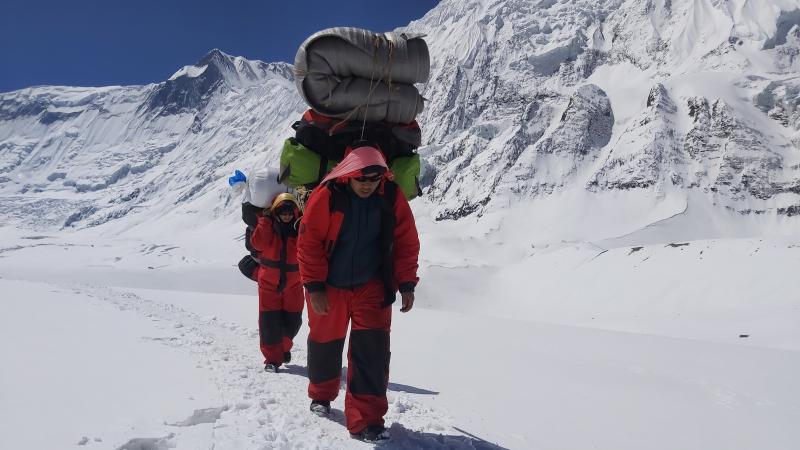

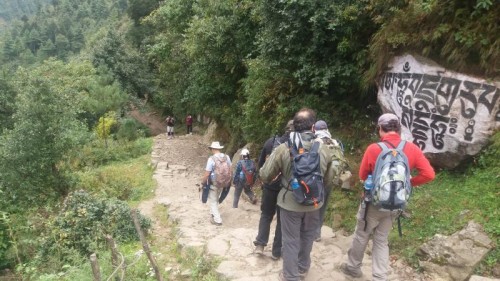

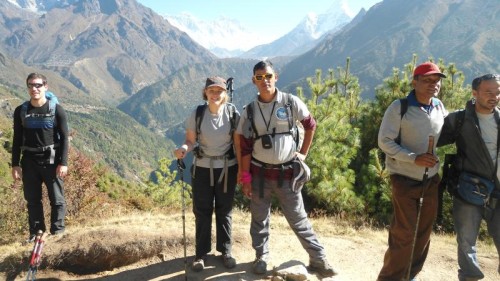

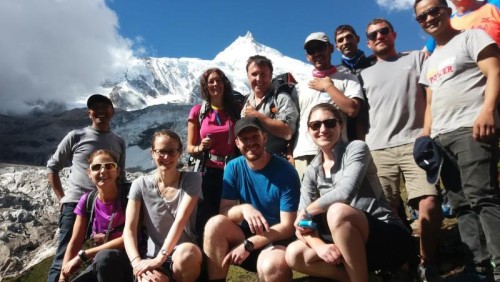



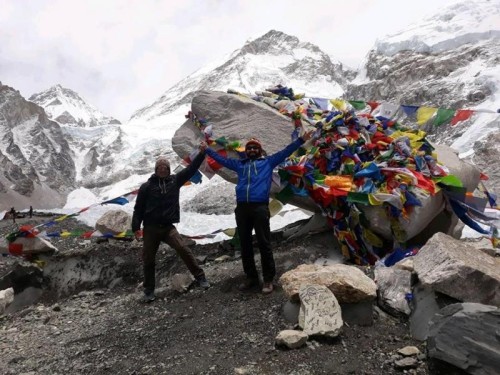
 USD 30
USD 30




Vimal
India
Memorable trek experience for Annapurna circuit Trek through High Pass Adventure
20th May, 2024
I had an Annapurna circuit Trek in April 2024 through High Pass Adventure. They arrange this trek for me at very affordable and reasonable price. The service I got from them is also very nice. The guide Gyan Bhai was very knowledgeable about the trek and route. They help to arrange all your logistics without any worries.
I highly recommend High Pass Adventure for hiring a guide to any treks in Nepal.